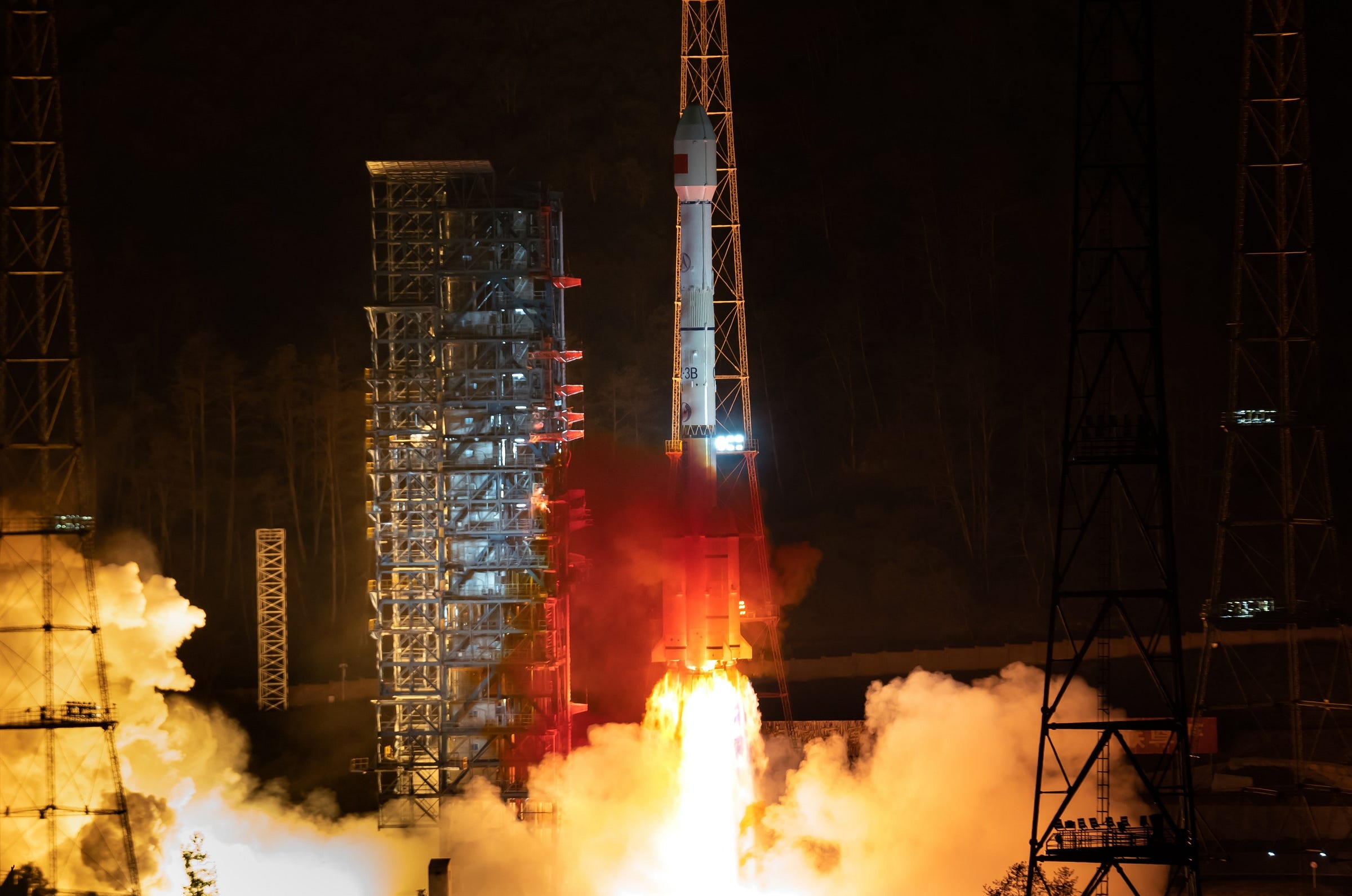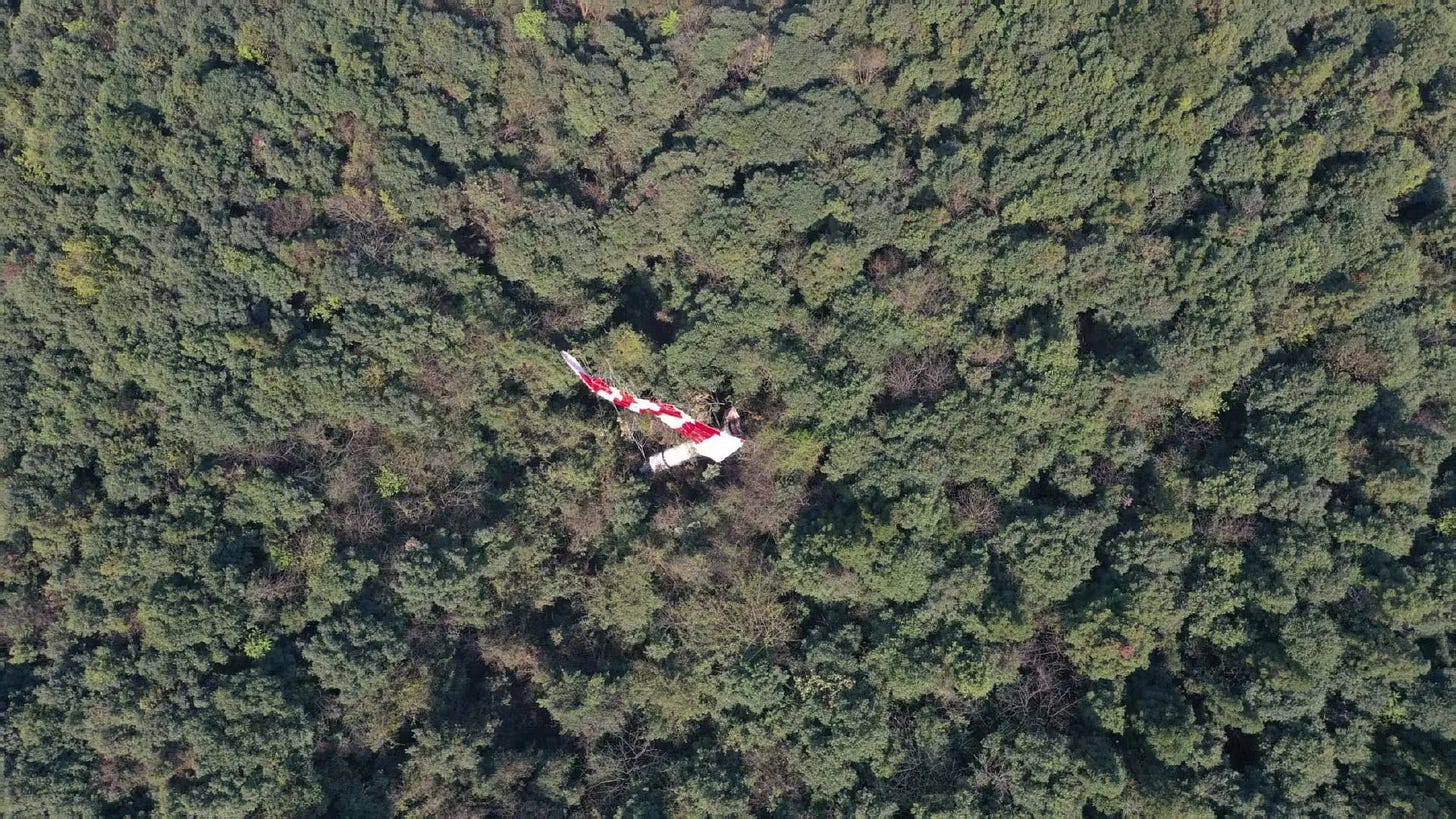Crewed Spacecraft Communications Satellite Launched! [Long March 3B/E]
China's taikonauts are set to gain better communications with the launch of a new satellite.
On March 26th at 23:55 pm China Standard Time (15:55 pm Universal Coordinated Time), a Long March 3B/E lifted off from Launch Complex 2 at the Xichang Satellite Launch Center heading for geostationary transfer orbit. Like the rocket’s previous mission, a single satellite was onboard.
The satellite launched atop of today’s Long March 3B/E was Tianlian-2-04 (天链二号04星). This satellite is based upon the DongFangHong-4 spacecraft bus, along with the previous satellites of the same series. Other Tianlian-2 satellites, of which there are three, were launched between 2019 and 2022, with five precursor Tianlian-1 spacecraft, based on the DongFangHong-3 bus, deployed from 2008 to 2021.
The fleet of Tianlian satellites is used to relay communications and data from crewed spacecraft in low Earth orbit, such as the Tiangong Space Station and transiting Shenzhou vehicles, as well as for other key spacecraft in medium Earth orbit. These satellites also remove communications dead zones where ground stations and communication ships aren’t present. NASA operates a similar series of satellites under its Tracking and Data Relay Satellite constellation.
Additionally, with more satellites launched greater amounts of scientific data can be downloaded from Tiangong. Alongside this, crews onboard can make video calls to researchers on the ground for help during experiments or to contact their families. This video call capability was notably used when the Shenzhou-12 trio spoke with President Xi Jinping in 2021.
The decision to launch a new Tianlian satellite after a three-year hiatus is likely a strategic decision. Driving factors behind the decision are possibly increased scientific activity onboard Tiangong, as well as future expansion, and testing of crewed lunar mission hardware in low Earth orbit. There is also a drive to deploy several communications networks in various orbits for constant communications in the Earth-Moon system.
Following the launch, the China Academy of Launch Vehicle Technology shared in their post-launch blog post that work to ensure high-density, high-frequency launch missions are continuing. This year’s high flight rate for the Long March 3B/E is said to be thanks to the mass production of vehicle hardware, working on multiple launch missions in parallel, as well as a high-skill, properly trained, and professional mission team.
So far five Long March 3B/E’s have launched this year, over half of what took an entire year in 2024. Additionally, toward the end of last year, the China Academy of Launch Vehicle Technology stated that they were aiming to launch the Long March 3B/E over a dozen times per year, with approximately fifteen days between missions.
Today’s mission was the 106th launch of a Long March 3B vehicle, and the 565th launch of the Long March launch vehicle series. This was also the 16th launch from China in 2025.
Liftoff video via Cosmic_Penguin on Twitter and 空天逐梦 on Weibo.
Post-release update
Following launch, one of the four side boosters was recovered. According to the China Academy of Space Technology (中国空间技术研究院), one of the boosters utilized a ram-air style parachute to slow its descent and guide it to a safe area. The academy went on to state:
“Large parachute recovery technology can significantly reduce the cost of space missions and enable the reuse of key components such as boosters. At the same time, the high-precision landing capability of a large parachute provides a new technical path for future rocket recovery, deep space exploration and other missions. In addition, this achievement will also drive technological progress in related fields such as materials science and automatic control.”
Check out the previous Long March 3B/E launch
Launch Cadence Grows for China's Geostationary Workhorse [Long March 3B/E]
A Long March 3B/E has blasted off from Launch Complex 3 at the Xichang Satellite Launch Center at 01:17 am China Standard Time on March 10th (or 17:17 pm Universal Coordinated Time on March 9th), carrying a single satellite out to a geostationary transfer orbit.
What is the Long March 3B/E?
This section is for those less familiar with China's Long March series of launch vehicles.
The Long March 3B is an older-generation geostationary orbit workhorse of the China Academy of Launch Vehicle Technology. The first two stages and four boosters of the rocket burn Dinitrogen Tetroxide and Unsymmetrical Dimethylhydrazine, with liquid hydrogen and liquid oxygen in the third-stage.
Over the rocket's almost twenty-eight-year launch history, two versions of the vehicle have flown, the 3B and 3B/E. Since 2012 only the 3B/E variant has flown due to its increased payload capacity. The payload capacity of the launch vehicle is currently as follows:
11,500 kilograms to low Earth orbit
7,100 kilograms to a sun-synchronous orbit
5,500 kilograms into a geostationary transfer orbit
2,000 kilograms into geostationary orbit
The first-stage is powered by four YF-21C engines that burn Dinitrogen Tetroxide and Unsymmetrical Dimethylhydrazine to generate 302 tons of thrust, while the boosters are powered by one YF-25 engine burning the same fuel to generate 72 tons of thrust each. Combined the four boosters and first stage generate a thrust of 590 tons. The second stage is powered by one YF-22E and four YF-23F vernier engines that also burn Dinitrogen Tetroxide and Unsymmetrical Dimethylhydrazine to generate 81 tons of thrust. The third-stage is powered by two YF-75 engines that burn liquid hydrogen and liquid oxygen to generate 17 tons of thrust.
On the launch pad, the Long March 3B/E is 56.3 meters tall and weighs 458,970 kilograms when fully fuelled. The first and second-stage have a diameter of 3.35 meters, while the third-stage has a diameter of 3 meters, along with the four boosters diameter of 2.25 meters, and the fairing has a diameter of 4.2 meters.
So far every Long March 3B launch has occurred from the Xichang Satellite Launch Center, in the south of Sichuan province.










![Launch Cadence Grows for China's Geostationary Workhorse [Long March 3B/E]](https://substackcdn.com/image/fetch/$s_!fVDy!,w_1300,h_650,c_fill,f_auto,q_auto:good,fl_progressive:steep,g_auto/https%3A%2F%2Fsubstack-post-media.s3.amazonaws.com%2Fpublic%2Fimages%2F23717428-c1c2-4ce0-b853-32cf27d494b7_3804x2536.jpeg)
